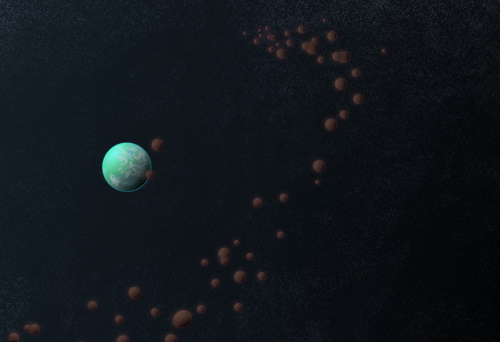Featured Author
 Scribe
Scribe
Featured Author submitted a new blog post:
Habitable Planets: Exoplanet Research for Worldbuilding
This article is by by Tina Hunter, and is presented by Worldbuilding Magazine.

Building a world from scratch is no small feat for any worldbuilder. From culture to characters and everything in between, the geology of the planet your story lives on can sometimes feel secondary. That shouldn’t be the case, however, as your geology can add a new layer to your world and story building. Almost like another character, your planet can be full of flaws, benefits, and dangers that enhance your story. I’ve found that the easiest place to start building a whole planet is to look at the strange and wonderful planets already out there being studied: exoplanets.
2019 marks a strange phase for the study of exoplanets. So far we have already discovered 49 potentially habitable planets, and scientists have extrapolated that we could have 40 billion in our galaxy alone. These discoveries are thanks to the deep space Kepler and K2 telescopes. Unfortunately, these telescopes have recently retired. Our new space telescopes, TESS (which launched last year) and JWST (which launches in 2021), find exoplanets using transit photometry, meaning they wait for a planet to cross in front of its star and take measurements from the dip in light. Therefore, if any of these planets have an orbit similar to Earth’s, we’ll be waiting at least a...
Continue reading the Original Blog Post.
Habitable Planets: Exoplanet Research for Worldbuilding
This article is by by Tina Hunter, and is presented by Worldbuilding Magazine.

Building a world from scratch is no small feat for any worldbuilder. From culture to characters and everything in between, the geology of the planet your story lives on can sometimes feel secondary. That shouldn’t be the case, however, as your geology can add a new layer to your world and story building. Almost like another character, your planet can be full of flaws, benefits, and dangers that enhance your story. I’ve found that the easiest place to start building a whole planet is to look at the strange and wonderful planets already out there being studied: exoplanets.
2019 marks a strange phase for the study of exoplanets. So far we have already discovered 49 potentially habitable planets, and scientists have extrapolated that we could have 40 billion in our galaxy alone. These discoveries are thanks to the deep space Kepler and K2 telescopes. Unfortunately, these telescopes have recently retired. Our new space telescopes, TESS (which launched last year) and JWST (which launches in 2021), find exoplanets using transit photometry, meaning they wait for a planet to cross in front of its star and take measurements from the dip in light. Therefore, if any of these planets have an orbit similar to Earth’s, we’ll be waiting at least a...
Continue reading the Original Blog Post.
